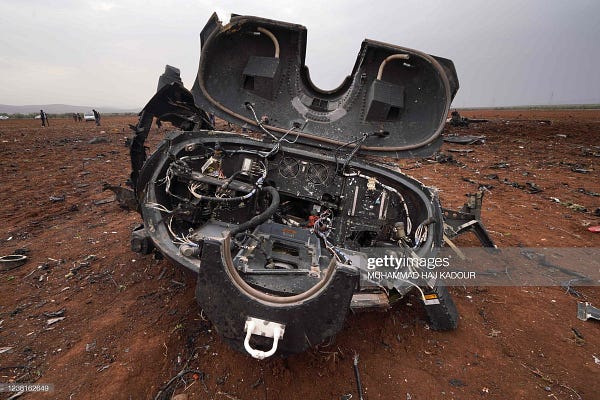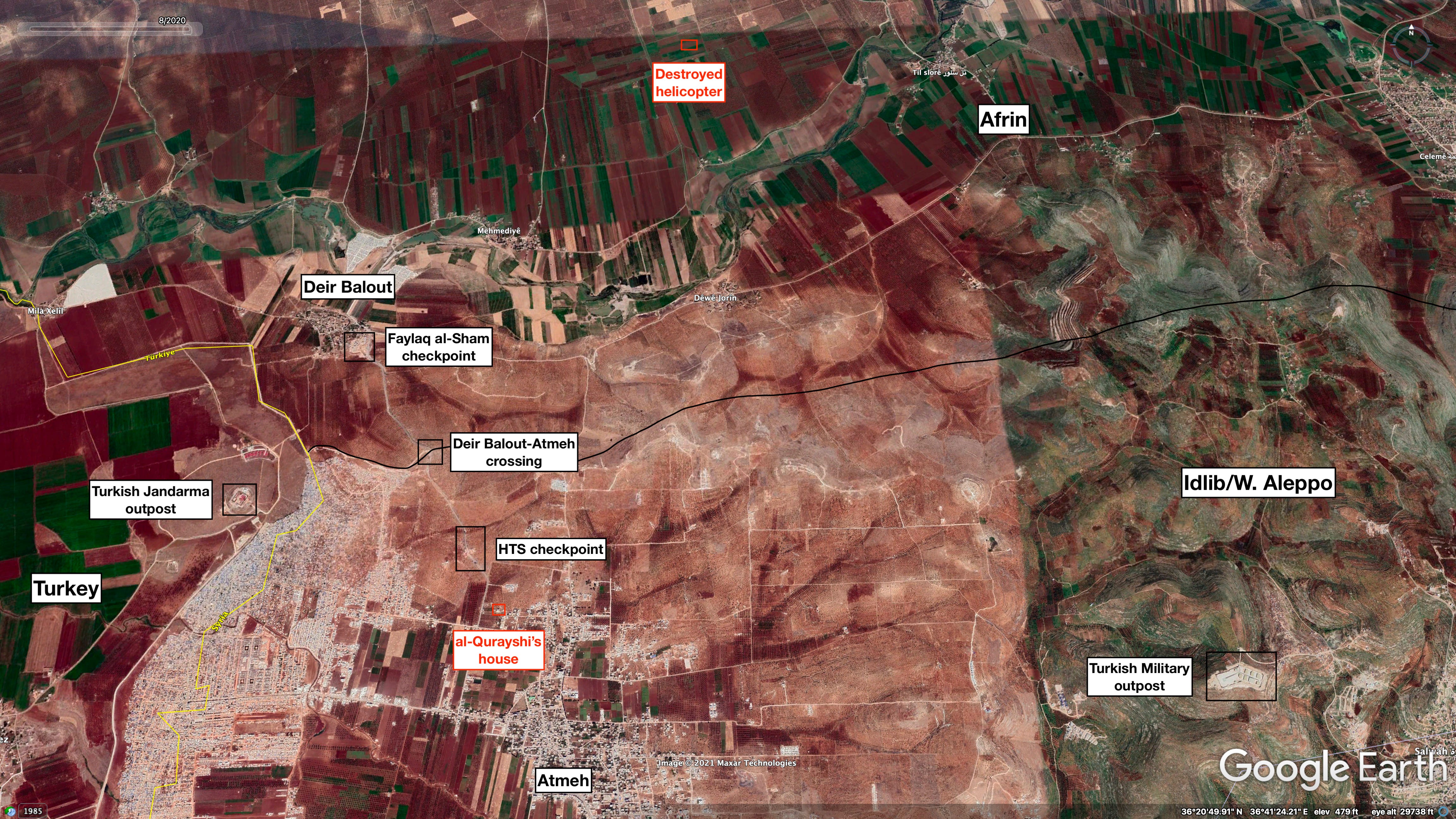The Atmeh raid one day later...
What we know so far about the killing of Abu Ibrahim al-Hashimi al-Qurayshi
Just minutes after midnight on the morning of February 3rd, social media accounts local to the Syrian town of Atmeh began reporting on mysterious helicopters circling overhead. Soon it became apparent that a raid was being carried out by the US-led coalition, targeting a residential building on the northern outskirts of the town. This lasted for almost exactly two hours, during which a firefight occurred, and an explosion caused portions of the house’s top floor to collapse. Soon after the helicopters left those arriving at the scene reported that approximately a dozen individuals were killed, including women and children. It was not until approximately twelve hours later that the target was identified by way of a White House statement in which President Biden announced that the US military raid had killed Islamic State leader Abu Ibrahim al-Hashimi al-Qurayshi.

Since daybreak, streams of information regarding the events of the night prior trickled out of northwestern Syria and Washington. However, several significant questions remain concerning both how the raid went down, particularly with regards to the deaths of multiple women and children, and how the target came to be residing in this house, located just under two kilometers away from the Turkish border. This marks the second time in little over two years that the IS ‘Caliph’ was killed in a US raid while living walking distance from Turkey. On both occasions this occurred within the part of Syria controlled by Hay’at Tahrir al-Sham and featuring a large Turkish military presence.
Setting
Atmeh is a small town located along the Turkish border, where the Idlib and Aleppo governorates meet. Its population has expanded massively over the course of the Syrian Civil War: whereas in 2004 it was home to 2,255, it now hosts tens of thousands of IDPs. Many of these new inhabitants live in the massive tent cities either pressed against the border or to the south of the town. Others live in the hundreds of new buildings constructed within the past ten years.
As part of ‘greater’ opposition-controlled Idlib, Atmeh is under the control of Hay’at Tahrir al-Sham (HTS), the jihadi outfit that was once al-Qa‘idah affiliate Jabhat al-Nusra. Atmeh contains one of two sanctioned internal border crossings into the Afrin region, under the control of Turkey’s Syrian National Army (SNA) proxy militias. This crossing between Atmeh and the Afrini town of Deir Balout is quite valuable: both HTS and SNA-affiliated Faylaq al-Sham maintain checkpoints on either side to extract duties on trade and monitor movement. This part of Idlib also contains a fortified Turkish military observation point, approximately five kilometers east of Atmeh, in addition to a Jandarma outpost abutting the border on the Turkish side, overlooking the sprawling IDP camp.
Midnight
At 12:04 local time, local civilian aircraft monitoring organization Marsad Syria (‘Syria Observatory’) reported 3 helicopters flying west of the town of Qah in the general direction of Atmeh. Over the subsequent thirty minutes, reports from Atmeh proliferated and began to speak of clashes. Local accounts came to identify this as a Coalition raid, with soldiers airdropped in to kill or capture an unidentified jihadi figure. The ongoing clashes were documented in several cell phone videos at the time, though given the time of night little can be deciphered from these apart from the sounds of gunfire and helicopter propellers. Beginning around 12:47, reports began highlighting messages being broadcast in the area over loudspeaker, demanding individuals vacate the targeted house and surrender.
At 1:03 in the morning, Al-Jazeera began an almost twenty six minute long Facebook livestream filmed from Atmeh in which the sound of helicopters is constant. Ten minutes later various accounts published two separate videos to Twitter and Telegram showing a portion of a house on fire. One video filmed from the ground was captured in particularly close proximity to the site.
Another video published about half an hour later features one of the helicopters firing at an unknown target. The cameraman appears to not far from the gunship’s target.
According to a number of accounts, operations concluded at around 2:11, with locals reporting the helicopters had vacated the area. The last Marsad Syria Telegram message mentioning helicopters in the vicinity of Qah was sent at 2:09.

Throughout the evening prior and into the early morning five aircraft were recorded on Flightradar24 circling the nearby areas at approximately 20,000 feet.
While no other information about these aircraft is available on Flightradar24, all five eventually vacated western Syria flying east. It is certain that these were US reconnaissance drones involved in the mission. Marsad Syria reported reconnaissance aircraft in the area until 6:10.
Aftermath
By 3:15, first responders and local journalists arrived at the site of the raid and began reporting on the scene via various social media platforms. There they encountered a three-story house with a partially collapsed top floor and a sizable debris field on the ground below.


The dead bodies of a man and two children were found lying on the ground outside (GRAPHIC), while others were discovered inside, including more children. One young girl was discovered alive and was seen being brought to a local hospital.

Around noon, Syria Civil Defence (SCD) published a brief on their involvement in response efforts (read in English below). According to the SCD, clashes and the “bombing that followed the airborne operation” continued until 3:07 “when helicopters exited the scene.” This is approximately an hour later than reported in other sources – Marsad Syria only reports reconnaissance aircraft in the area after 2:09 – but this may explain why there’s no footage from the scene until after three.
Some US military equipment was found discarded at the scene, included a spent flash bang and expended detonators.

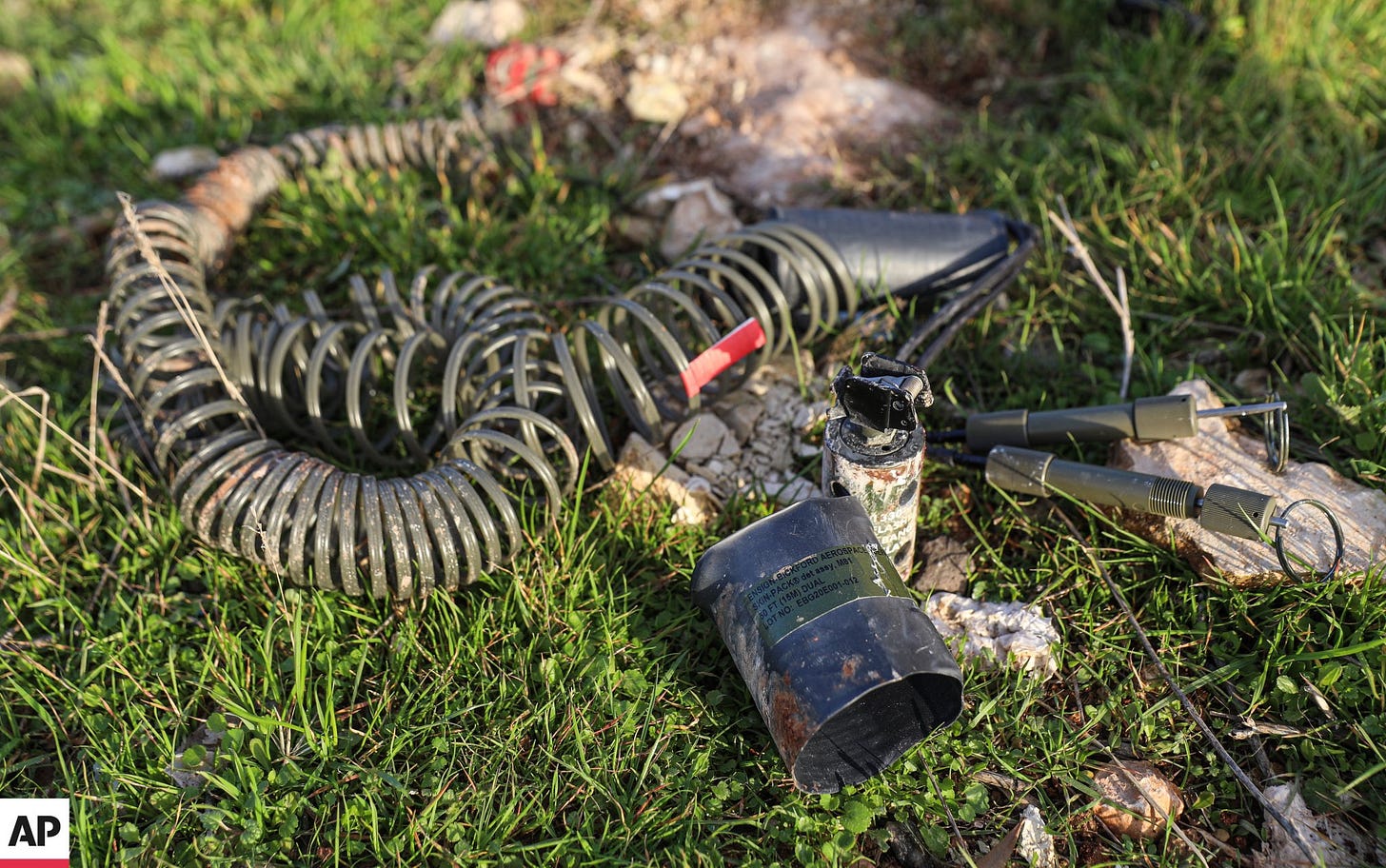
Washington
Several hours after the White House announced the target and results of the raid at 7:48AM EST, select details of the operation were released to the press in a call with reporters and a press briefing by Pentagon Press Secretary John F. Kirby. The raid was undertaken by “U.S. Special Operations Forces, under the control of U.S. Central Command,” and preparations had gone on for months. President Biden was allegedly briefed on details regarding the operation in December. Statements given to reporters by the senior administration officials imply that al-Qurayshi had been under US surveillance at this site for an extended period. The administration claimed that al-Qurayshi and his family lived on the third floor of the building and the IS leader was never seen to leave it. In a manner reminiscent of Osama bin Laden’s Abbottabad era, al-Qurayshi communicated with the outside world through couriers and a ‘lieutenant’ who lived on the second floor. According to the administration, an innocent family unrelated to the Islamic State resided on the first floor/basement.
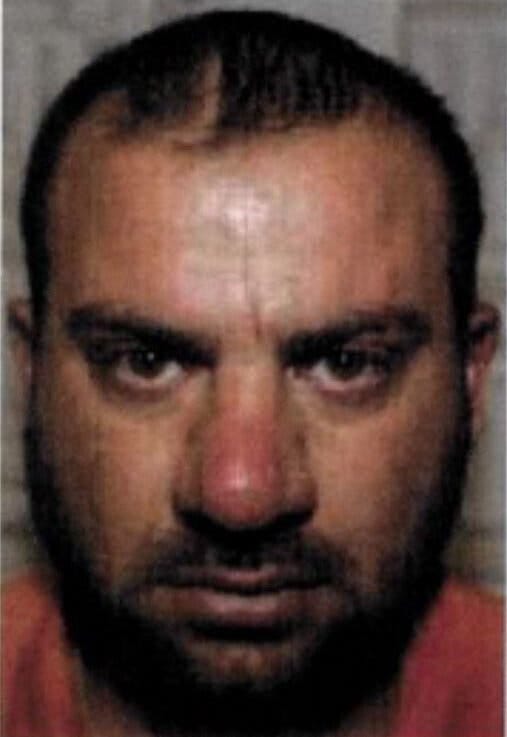
While speaking to the press, John F. Kirby stated that the two-hour period the raid took place over was intention. The operation was designed to begin with US forces “securing and isolating the site, then…to get innocents and, quite frankly, to encourage [al-Qurayshi] to leave this site, and that's why they used a bullhorn and -- and made several callouts, beseeching everybody in that building to leave.” According to the Pentagon, instead of surrendering al-Qurayshi set off an explosive, killing himself, his wife and two children, as well as collapsing the roof of the third floor. Al-Qurayshi’s ‘lieutenant’ and his wife on the second engaged US forces with firearms and both killed in the process. Refusing to elaborate further, Kirby stated in his press briefing that “and it…appears as if a…child was also killed on that second floor.” Al-Qurayshi identity was apparently confirmed post-mortem by way of fingerprints and a DNA sample.
Towards the end of the mission, US forces were purportedly attacked by a small number of individuals approaching the site. These men were engaged by helicopter fire which killed two and allegedly convinced them to retreat.
The Pentagon reports that they were able to safely evacuate the six-member family residing on the first floor, in addition to four children from the second floor. These two claims appear to be corroborated in testimony given to Baladi News by the mother of the first-floor family, who identifies the surviving four kids from floors above as a fifteen-year-old boy, an eleven-year-old girl, a seven-year-old girl, and a four-year-old boy.
The number of individuals reported killed in the raid, according to the Pentagon’s account, is seven: on the third floor, al-Qurayshi, his wife and two kids, while on the second floor, the ‘lieutenant,’ his wife, and a child. This leaves a six-person discrepancy between the numbers reported by the Syria Civil Defence and the US Military. More specifically, this is a discrepancy of one man, two women, and three children. When discussing the family of the surviving four children from the second floor, the aforementioned witness states that a father, mother, and brother were killed, pointing to the possibility that additional family members were either living in or visiting the house at the time.
The other question that remains is whether the Pentagon’s claims regarding al-Qurayshi blowing the third floor himself are factual. Testimony by witnesses interviewed by local news outlets doesn’t paint one clear narrative (though requires further analysis). Some claim US helicopters fired on the building, while others speaking of women on the second floor in suicide vests. As of right now, the Pentagon’s story has not been proven, though at the same time there’s no evidence to suggest the roof collapsed due to ie. an airstrike.
The House
By daybreak, the location of the house targeted became quite evident. It lies on a hill in the northern outskirts of Atmeh, only half a kilometer away from the HTS checkpoint on the Deir Balout-Atmeh crossing.






Somewhat unusually the exact location of the house was accurately shared on social media at 1:19 while the clashes were going on, though it was essentially impossible to confirm this information visually until daylight.
The damage that occurred to the structure is clearly visible. The roof of the top floor’s rear room partially collapsed, scattering debris onto the ground below. It appears that the blast primarily shot fragments of cinder block and cement to the northwest, with some of the debris falling to the ground below and some covering the northwest corner of the roof. A smaller debris field can be seen on the ground at the northeast corner of the building.


The Department of Defense published two images from reconnaissance drone footage taken during the raid, one before and one after. The second photo shows fire burning in a room in the front (south side) of the building.
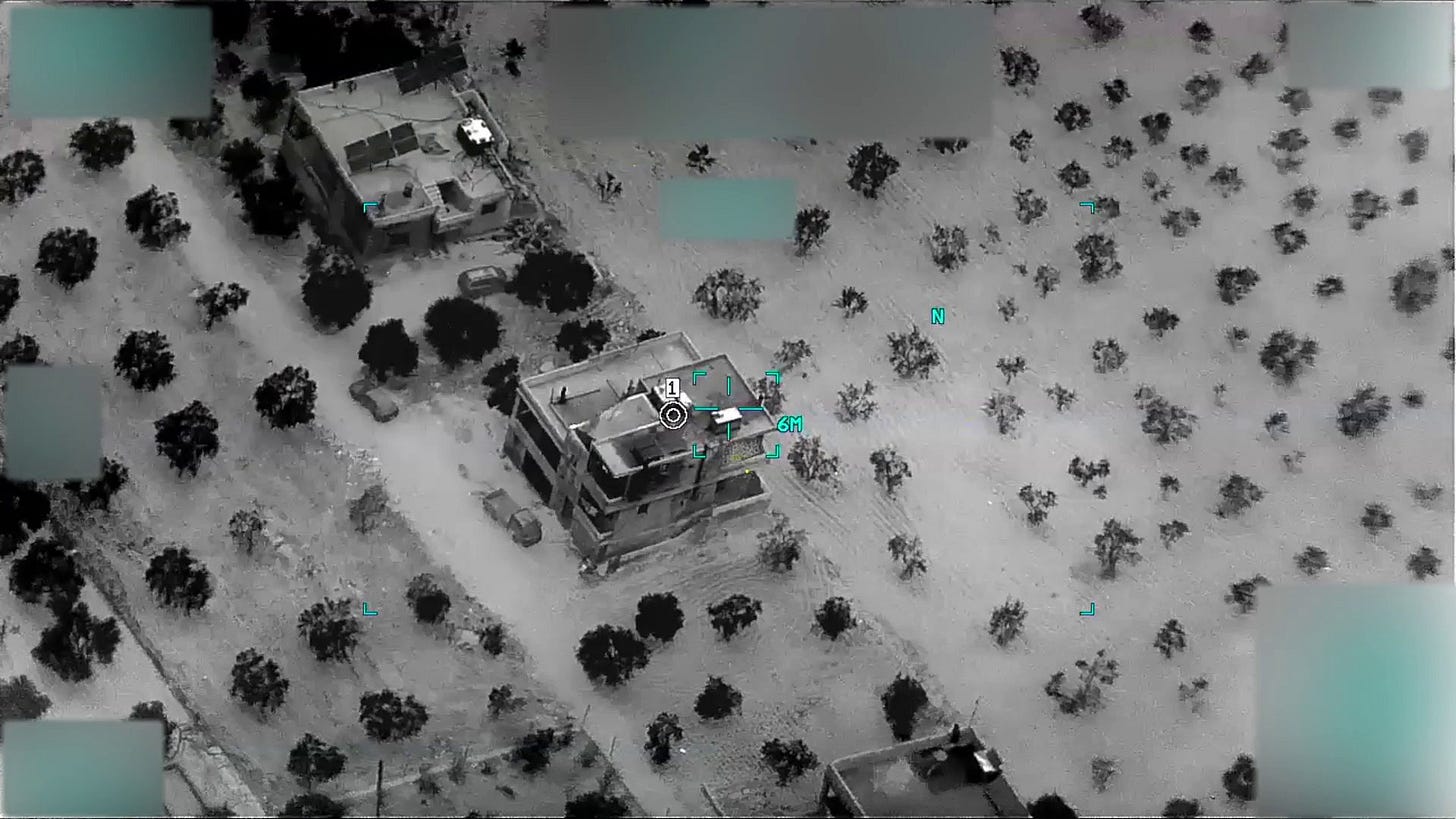

The interior of the top front room is charred from fire and in exterior shots one can see that it’s clearly the location of the fire filmed during the raid from both the ground and the air.
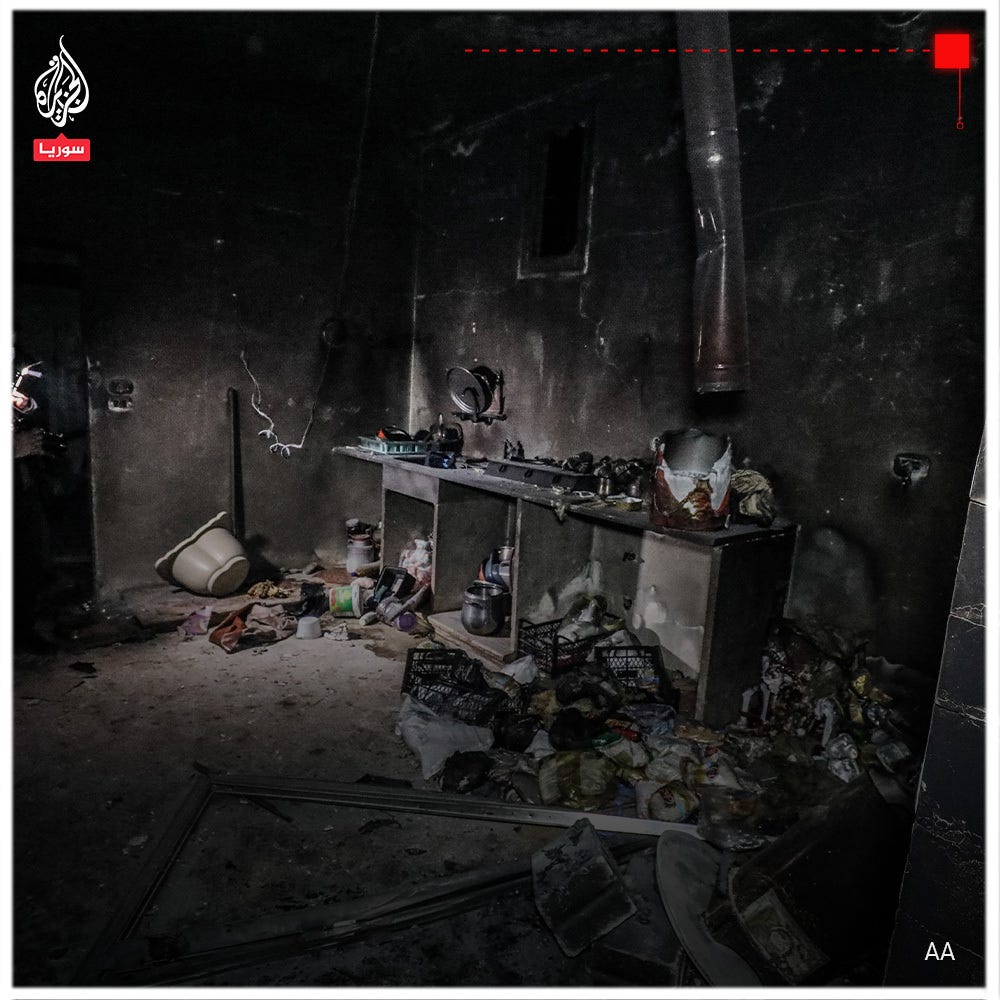

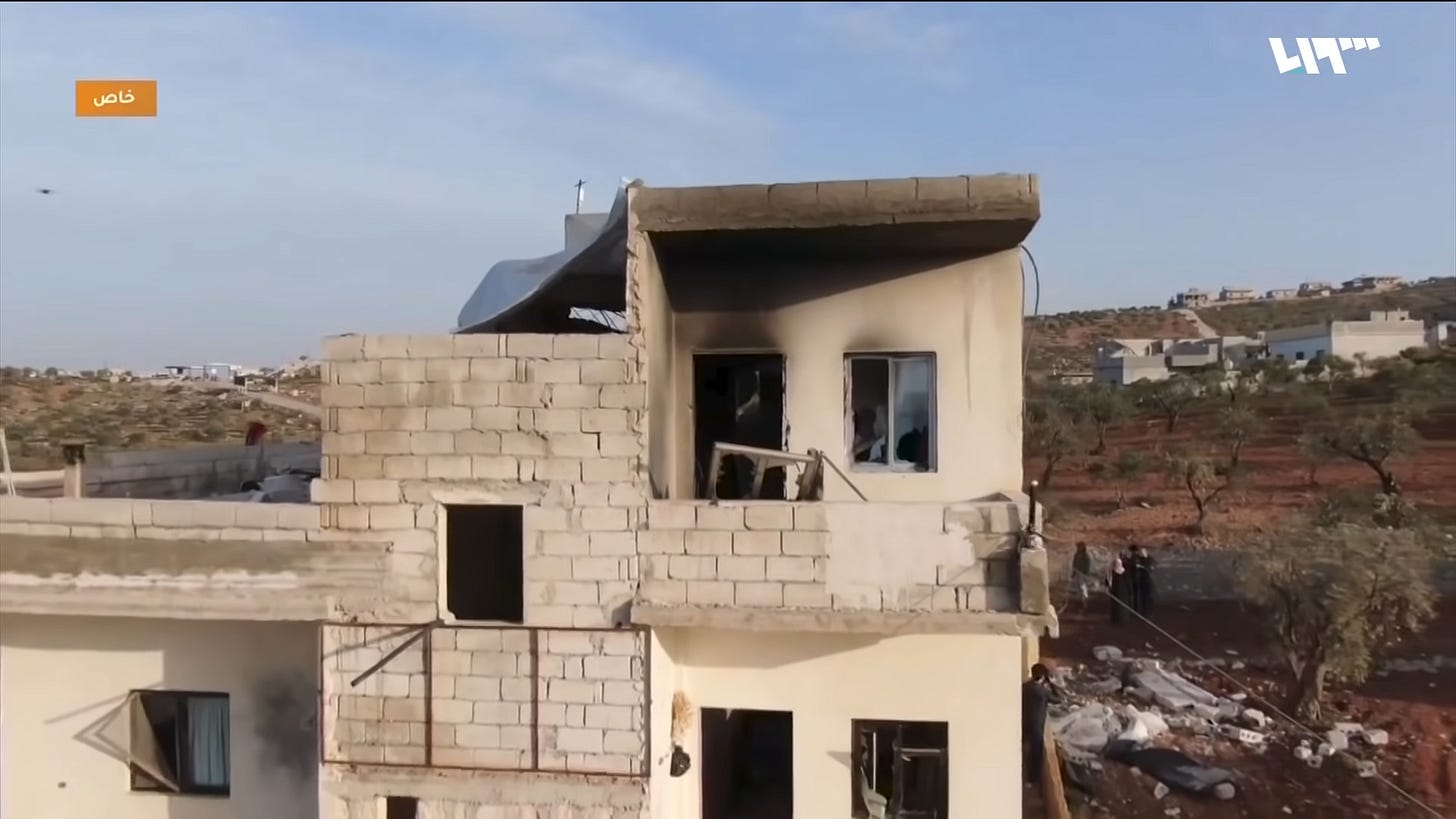

Blood splatter is seen in footage taken on the top floor, both in the rubble underneath where the roof collapsed and in the debris field to the northwest.
This footage taken that morning allows for the geolocation of the graphic video linked to in the previous section showing a dead man (believed to be al-Qurayshi) and two children. They were found lying on the ground near the northwestern corner of the building.



Photos and videos from the main floor show furniture and household objects scattered everywhere. There does not appear be footage published on February 3rd showing the ground floor in which the innocent family lived.

There are two separate blood pools seen in footage of the main floor. One is located just east of the entrance to the stairwell. There is blood splattered on the south and east walls at this location as well. The other is another in a small room with pink tiles, located just north and east of the first site.
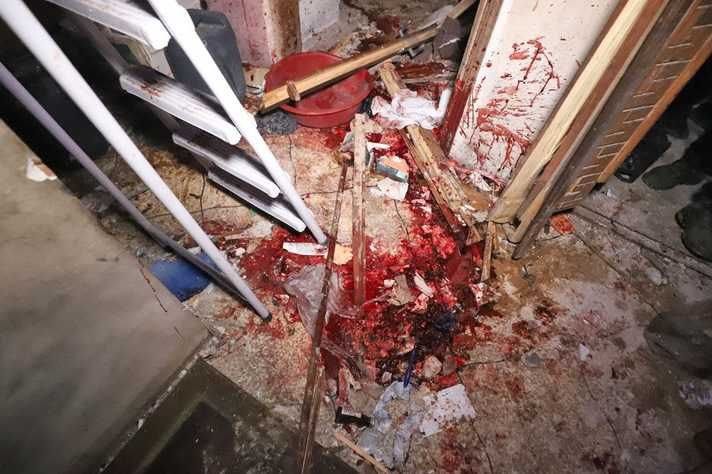

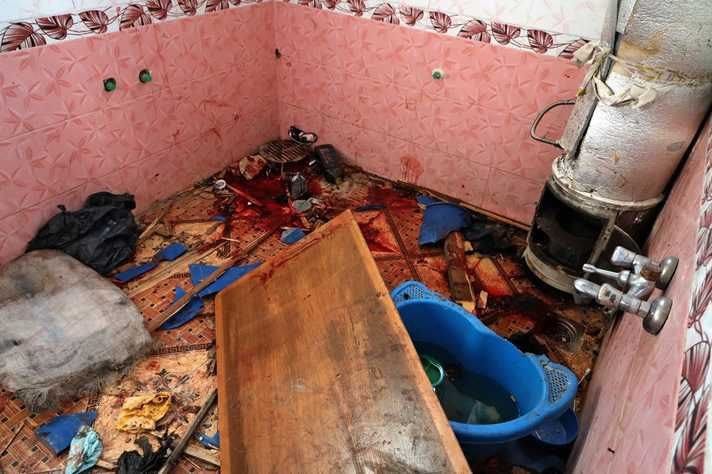
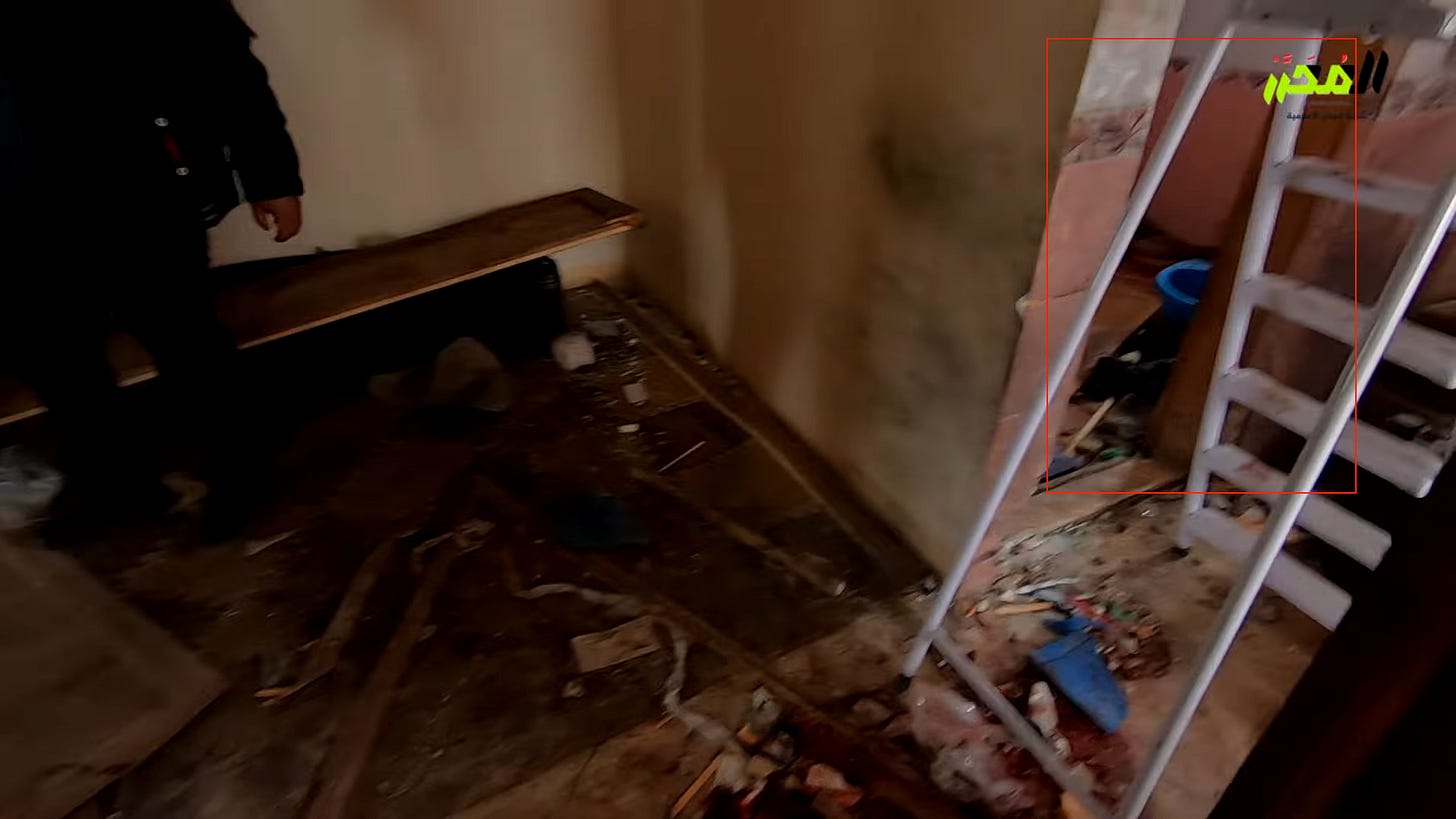
In addition to the house, pictures from the area show damage to a garage one hundred meters to the southeast, likely caused by gunship cannons. This is possibly related to the firefight with unidentified men who approached the site towards the end of the raid, as mentioned by Pentagon Press Secretary John F. Kirby.



The Helicopter
As a host of local news agencies were filming the house, the charred remains of a destroyed helicopter were discovered lying in a field within the Afrin region over five kilometers to the northeast.
















This was identified as an MH-60 Black Hawk and was found to be missing key electronic components.
Interestingly, Marsad Syria reported three helicopters in the area from 12:04 until 1:05. After that they only reported two helicopters, once at 1:45 and finally at 2:09.

According to Pentagon Press Secretary John F. Kirby:
“It was a drivetrain issue. It didn't crash. It…landed safely at an alternative location. They looked at it to determine whether it could be fixed and…continue to be used…in the operation and it was determined…that was not possible. So General McKenzie ordered that it be detonated and destroyed on site.”
A quoted unnamed US official told reporters that it was rigged with explosives, then struck “with air-launched munitions.”
Conclusion
Similar to the al-Baghdadi case, the location in which the US found IS leader Abu Ibrahim al-Hashimi al-Qurayshi immediately rose eyebrows. How were two of the most wanted men in the world found living just outside Turkey? Unlike al-Baghdadi, who chose to live in a secluded compound on the outskirts of a small town, al-Qurayshi picked a building in perhaps the most densely populated disrict of northwestern Syria. Additionally, his third-floor apartment was located 500 meters from an HTS checkpoint, 2.15 kilometers from a Turkish Jandarma post across the border, and approximately 5 kilometers from the closest Turkish military base inside Syria.
It’s quite apparent that combating the Islamic State is low on Turkish priorities in Syria. Since 2016, when Turkey came to accept Russia’s intervention in the war, Turkey’s predominant policies have been to reverse any semblance of Kurdish autonomy and prevent any more Syrians from crossing the border and claiming refugee status. Neither of these is likely to ever change. This lack of interest combined with Turkey’s hands off approach to the internal affairs of HTS-controlled Idlib has apparently allowed the last two IS leaders to find (temporary) refuge. That said, this and all analysis of the matter for the time being is based on speculation rather than evidence.
What’s perhaps more curious is the role HTS has or hasn’t played in these two stories. Are certain sympathizing elements within the organization assisting IS leadership? Or despite HTS’s regular raids on IS cells across Idlib, are its security services unable to find the al-Baghdadis and al-Qurayshis? Or, is it possible that HTS leadership has played a role in these operations, in an attempt to curry favor with the west? Unfortunately, the answers to questions like these are rarely forthcoming.









